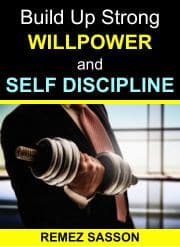
Imagine you’re engaged on your phone, scrolling through social media, answering messages, or binge-watching your favorite shows. Little do you know, your neck is working overtime, stressed by the angle at which you’re holding your device.
This common habit, coupled with the hours you spend glued to screens, has given rise to the infamous tech neck and screen slouch. But do you know these habits are taking a toll on your spine? That’s right! In the age of technology, modern conveniences come at a cost, and your spine is bearing the brunt of it.
Let’s discover how tech neck and screen slouch affect your spine and how you can give it the love and care it deserves.
What is Tech Neck and Screen Slouch?
Browse our online courses on meditation, positive thinking, overcoming procrastination, confidence, and freedom from distractions.
Tech Neck has become a common term used to describe the strain and pain that comes from constantly looking down at your phones, tablets, or laptops.
Picture this: head down, shoulders hunched, and neck bent – that’s Tech Neck at play. This posture puts extra pressure on the neck.
Talking about screen slouch, it’s a position that spells trouble for your upper back. This is especially true when sinking into your chair, shoulders rolling forward, and upper back rounded. That’s the classic Screen Slouch. It’s not just a relaxed posture; it’s a position that can cause trouble for your upper back.
While they might sound like buzzwords, they’re real issues affecting many in the digital age. Let’s see how.
Problem: Neck Pain and Muscle Tension
When working on a laptop or binge-watching your favorite shows, your neck bears the brunt of this extended screen time. The consequences of this constant neck strain manifest in various ways.
You may experience lingering stiffness or soreness after a long session on devices. It’s not just in your heads – it’s in your necks.
The muscles tighten, and the discomfort can extend from the neck to the shoulders. This persistent muscle tension can escalate into chronic issues like restricted range of motion and even potential damage to the cervical spine.
Solution:
One solution stands out: including regular massages into your routine. Sure, booking appointments or scheduling spa visits in the busy world is impossible.
That’s where you can own massage chairs, ready to use whenever you need them. The chair’s gentle kneading and rolling motions can help soothe tight muscles, promote blood circulation, and alleviate the stiffness that often accompanies tech neck.
Headaches and Eye Strain
Spending hours in front of screens has become the norm. But, it comes at a price – headaches. The culprit? The position of your screens. Whether it’s the glare from overhead lights or the awkward tilt of your device, these factors strain your eyes and trigger those pesky headaches.
But that’s not all! Staring at screens for prolonged periods can leave your eyes tired and irritated.
The constant focus on pixels and text on screens demands a lot from your eye muscles. Over time, this eye strain becomes a regular companion, making screen time less enjoyable and more burdensome.
Solution:
Now, let’s talk about solutions. First up is the 20-20-20 rule. It’s a simple concept – take a break of 20 seconds every 20 minutes and look at something 20 feet away. This relaxes your eye muscles and prevents them from overworking.
Adjusting screen positions matters, too. Ensure your screen is at eye level and about an arm’s length away. Lastly, include eye exercises in your routine. Simple exercises like rolling your eyes or blinking intentionally can help alleviate eye strain.
Rounded Upper Back and Poor Posture
When you consistently lean forward to view your devices, your upper back muscles become overstretched, and the chest muscles tighten.
As a result, your shoulders are pulled forward. Over time, this creates a curvature in the upper spine, commonly referred to as a rounded upper back.
This rounded posture isn’t just about appearances; it signifies a misalignment in the spine that can lead to many issues.
That’s not all! This may lead to chronic pain, particularly in the upper back, neck, and shoulders, and can influence the function of vital organs. The misalignment can compress nerves and disrupt the body’s natural balance.
Solution:
Thankfully, all is not lost. You can reverse the effects of a rounded upper back and poor posture through targeted exercises and posture correction techniques.
Strengthening the upper back muscles is key to restoring balance and realigning the spine. Simple exercises like shoulder blade squeezes, wall angels, and seated rows can help build strength in the upper back.
Additionally, posture correction techniques in your daily routine, such as consciously sitting up straight and adjusting your workspace ergonomics, can make a significant difference.
Conclusion
Ultimately, understanding the implications of tech neck and screen slouch empowers you to make informed choices about your daily activities.
By taking proactive measures and including spine-friendly habits, you can reduce the adverse effects of modern technology and enjoy a pain-free posture in the long run.
Image source – DepositPhotos

